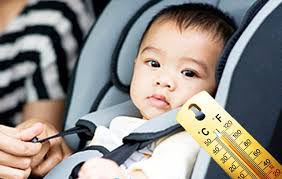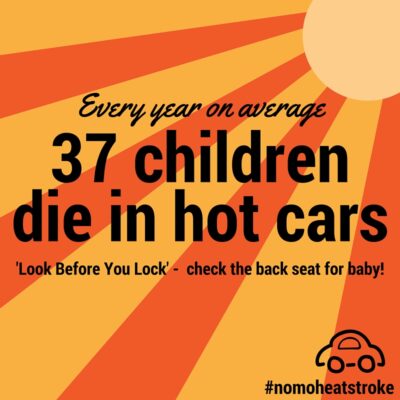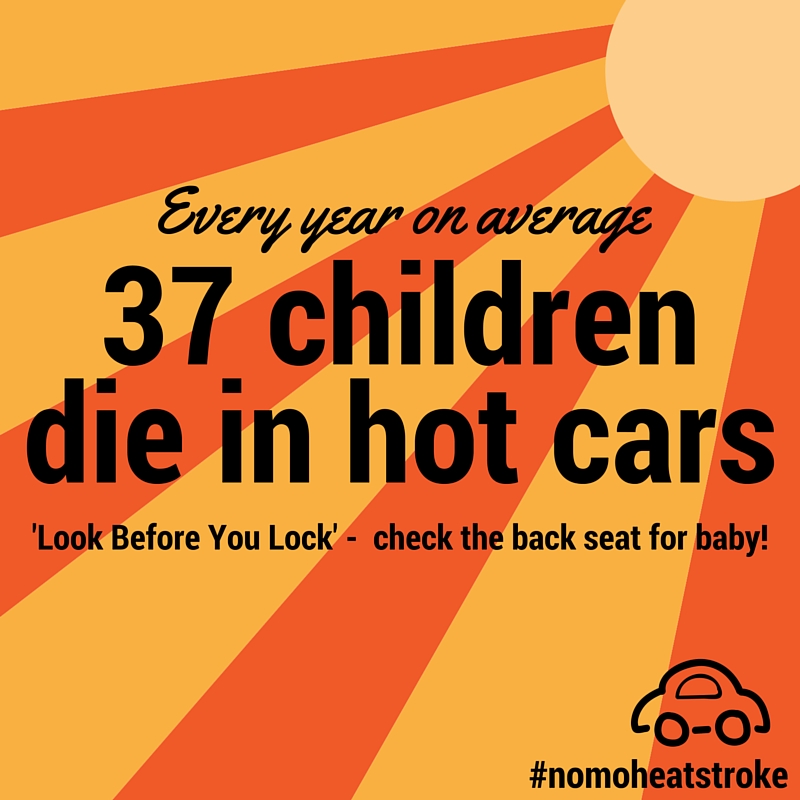On average, 37 kids die in hot cars each year from heat-related deaths after being trapped inside motor vehicles. Even the best of parents or caregivers can unknowingly leave a sleeping baby in a car; and the end result can be injury or even death.
This week in a 2-part post, we will discuss the reasons these tragedies happen and offer tips to prevent it from happening to you or a loved one.
Here’s an excert from KidsAndCars.org that explains how the unthinkable can happen to anyone:
Child Vehicular Heat Stroke Facts
Vehicular heat stroke is largely misunderstood by the general public. The majority of parents are misinformed and would like to believe that they could never “forget” their child in a vehicle. The most dangerous mistake a parent or caregiver can make is to think leaving a child alone in a vehicle could never happen to them or their family.
In over 55% of these cases, the person responsible for the child’s death unknowingly left them in the vehicle. In most situations this happens to the most loving, caring and protective parents. It has happened to a teacher, dentist, social worker, police officer, nurse, clergyman, soldier, and even a rocket scientist.
The Greenhouse Effect in Vehicles
- The inside of a vehicle heats up VERY quickly! Even with the windows cracked, the temperature inside a car can reach 125 degrees in minutes.
- 80% of the increase in temperature happens in the first 10 minutes
- Cracking the windows does not help slow the heating process OR decrease the maximum temperature
- Children have died from heatstroke in cars in temps as low as 60 degrees.
Contributing Factors
- A child’s body overheats 3-5 times faster than an adult body.
- A change in daily routine, lack of sleep, stress, hormone changes, fatigue, and simple distractions are things ALL new parents experience and are just some of the reasons children have been unknowingly left alone in vehicles.
- Rear-facing car seats look the same whether there is a baby in it or not.
- Children, especially babies, often fall asleep in their rear-facing child safety seats; becoming quiet, unobtrusive little passengers.
 Memory (Competing Brain Systems)
Memory (Competing Brain Systems)
- Prospective Memory: processed by 2 brain structures
- Hippocampus, stores new information, the ‘here and now’ (processes that a child is in the car)
- Prefrontal Cortex, enables us to plan future, accounting for a change in routine (processes route, including to go to daycare rather than straight to work)
- Habit memory: forms subconsciously through repeated activities like riding a bike
- Basal Ganglia – stores habit memories (driving to/from work daily), enables auto-pilot
What causes a parent to misremember?
The basal ganglia takes over and suppresses the prefrontal cortex. The brain is on auto-pilot, doing what it would do on any given day, not accounting for changes in routine. Memory specialists note that the basal ganglia is much more likely to take over when someone is fatigued.
“Parents lose awareness that their children are in their cars. Tragically, these parents report that they had pictures of their child on their desks, they talked about their child, and even left work on time to pick up their child from daycare.” (Dr. David Diamond, Neuroscientist, University of South Florida)
Next up: Tips to prevent this tragic mistake
For more information visit www.KidsAndCars.org.










